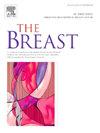CADONOT: Comparing axillary dissection or not in breast cancer surgery
IF 5.7
2区 医学
Q1 OBSTETRICS & GYNECOLOGY
引用次数: 0
Abstract
Introduction
Sentinel lymph node biopsy (SLNB) is the gold standard for the axillary evaluation of clinically node-negative early breast cancer. The ACOSOG Z0011 study demonstrated the safety of omitting axillary dissection for limited SLNB disease, with other trials confirming SLNB alone or with axillary radiotherapy (AR) as non-inferior.
Methods
We followed PRISMA guidelines and registered at PROSPERO. Using Medline, Embase, and Cochrane, we reviewed randomized controlled trials (2010–2024). Outcomes, including 5-, 8-, and 10-year OS, DFS, recurrence rates, and lymphedema, were analyzed with R software and assessed for bias (Cochrane RoB) and evidence quality (GRADE). The focus was ALND vs. SLNB, alone or with AR, in cT1-T3 BC with 1–2 metastatic SLNs.
Results
Thirteen articles from seven randomized controlled trials (RCTs) were included, covering 7338 women with a follow-up period of 2.8–10 years. SLNB was associated with a 65 % lower risk of lymphedema than ALND, with no significant differences in the 5-, 8-, or 10-year OS, DFS, or recurrence rates. A meta-analysis comparing micrometastasis and macrometastasis showed no impact on outcomes, indicating that ALND may be unnecessary in either case. Recurrence rates also did not differ between SLNB and ALND, reinforcing SLNB's significantly lower lymphedema risk of SLNB.
Conclusions
This systematic review and meta-analysis support SLNB as a safe and effective alternative to ALND in early-stage BC with 1–2 positive SLNs, providing comparable survival and recurrence outcomes, with fewer complications.
乳腺癌手术中腋窝清扫与不腋窝清扫的比较
导言前哨淋巴结活检(SLNB)是对临床结节阴性的早期乳腺癌进行腋窝评估的金标准。ACOSOG Z0011 研究表明,对于有限的 SLNB 疾病,省略腋窝清扫是安全的,其他试验也证实了 SLNB 单独或与腋窝放疗(AR)联合治疗的非劣效性。我们使用 Medline、Embase 和 Cochrane 查阅了随机对照试验(2010-2024 年)。结果包括 5 年、8 年和 10 年的 OS、DFS、复发率和淋巴水肿,用 R 软件进行了分析,并评估了偏倚(Cochrane RoB)和证据质量(GRADE)。结果纳入了来自 7 项随机对照试验 (RCT) 的 13 篇文章,覆盖 7338 名妇女,随访时间为 2.8-10 年。SLNB发生淋巴水肿的风险比ALND低65%,5年、8年或10年的OS、DFS或复发率无显著差异。一项比较微转移灶和大转移灶的荟萃分析表明,微转移灶和大转移灶对治疗结果没有影响,这表明在这两种情况下都没有必要进行ALND。复发率在 SLNB 和 ALND 之间也没有差异,这进一步证实了 SLNB 的淋巴水肿风险显著低于 SLNB。结论这项系统综述和荟萃分析支持 SLNB 作为 ALND 的安全有效替代方案,用于 1-2 个阳性 SLN 的早期 BC,可提供相似的生存和复发结果,且并发症较少。
本文章由计算机程序翻译,如有差异,请以英文原文为准。
求助全文
约1分钟内获得全文
求助全文
来源期刊

Breast
医学-妇产科学
CiteScore
8.70
自引率
2.60%
发文量
165
审稿时长
59 days
期刊介绍:
The Breast is an international, multidisciplinary journal for researchers and clinicians, which focuses on translational and clinical research for the advancement of breast cancer prevention, diagnosis and treatment of all stages.
 求助内容:
求助内容: 应助结果提醒方式:
应助结果提醒方式:


